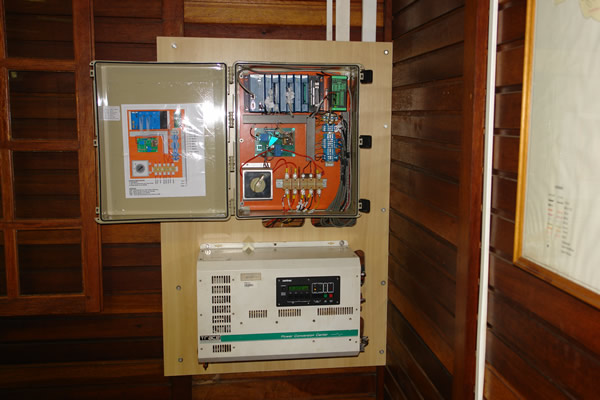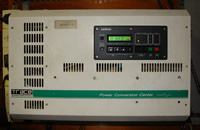
Figure 1 - Layout of the inverter and the data acquisition system in the Control Room.
In the control room there are the voltage inverter and the data acquisition system.
9.1. Voltage Inverter
Regardless of the source chosen by the controller (battery, PV panels or wind turbine), the voltage is always continuous (CC).The equipment of the house (as in a normal house) must be powered by alternating current (AC) 120 V at 60 Hz. Conversion of 48 Vdc at 120 Vac is taken by the inverter voltage.

Figure 2 - Voltage Inverter
In the Solar House the supply of electricity in alternating current (AC) was chosen to simulate a conventional house and allow the use of domestic electronic equipment. To condition the power output of the autonomous generation system at 48 Volts DC to meet the load at 120 Volts AC at 60Hz, an electronic converter, known as voltage inverter is used.
A single voltage inverter is used to supply the whole house with alternating current (Figure 2). Another option would be to use smaller inverters distributed by appliances or load points. This second option has the advantage of preventing total power outage in the event of an inverter default. In case there is a single larger inverter, the occurrence of a default would leave the house without power until the replacement or repair of the inverter. The distributed system has the disadvantage, however, of the need to use higher amounts of larger diameter wires, as it operates with DC power at a lower voltage (48Vdc against 120 Vac), the current is increased for the same transmitted power. The inverters are capable of providing stable output voltage in terms of amplitude and frequency, with suitable level for use with commercial appliances. The task of discharge control of the batteries is also held by central voltage inverter of CSE.
9.2. Data acquisition system

The Data Acquisition System (DAS) of the Solar House conducts the activities of collection, processing and storage of measured data from physical phenomena that characterize the behavior of the power generation system and solar water heating system and describe environmental conditions of the Solar House. The information gathered can be used for different activities such as: (1) supervision and control; (2) performance analysis; and (3) maintenance planning.
This system is designed to monitor all quantities of voltage and current in the main points of the solar house (as illustrated in Figure 1.3), in addition to registering magnitudes of temperature and solar irradiance.
The DAS provides two types of output data:
- Real-time measurement: shows values of series measured in 1-second intervals during a determined period. The oldest data is discarded;
- History of measured data: contains statistics of intervals of 5 minutes (300 measured values every 1 second).
The Data Analysis and Monitoring System allows you to see the historical measured data and monitor real-time operation of the Efficient Solar House.